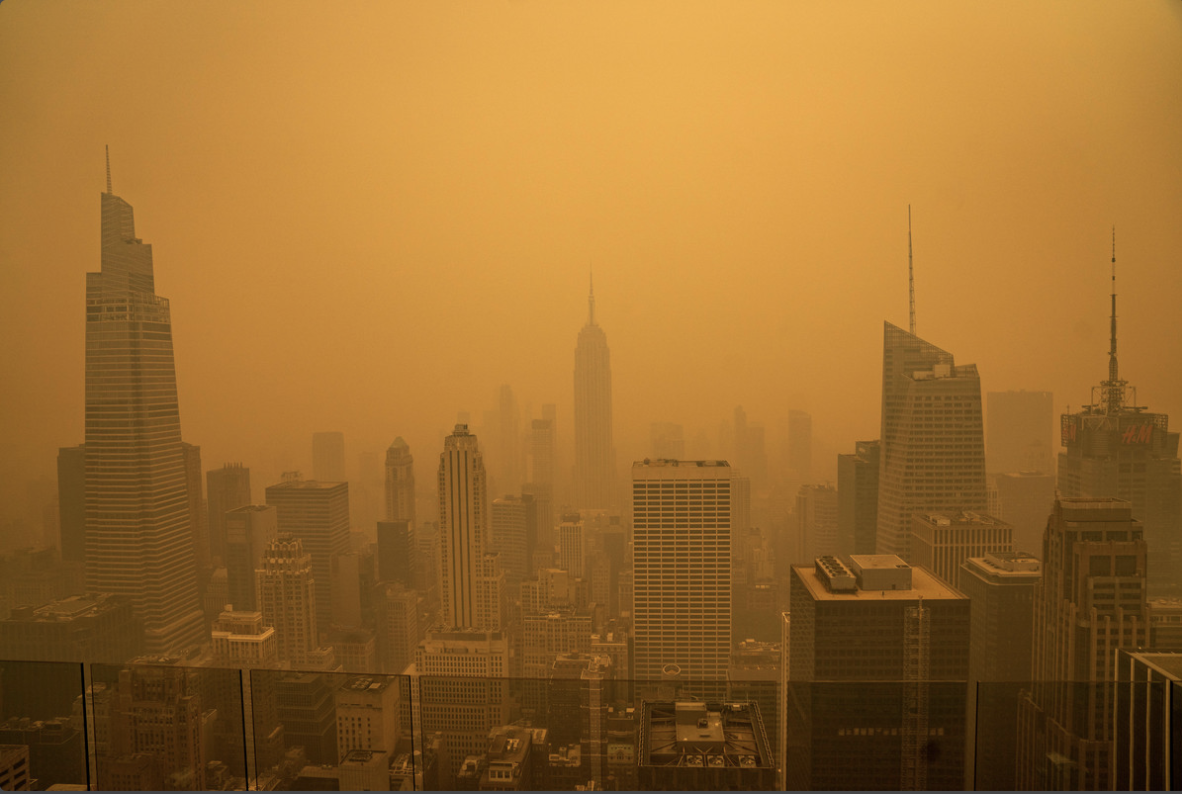In the past year, people all around the world felt the effects of wildfires. Hundreds of out-of-control wildfires dominated many areas, causing mass evacuations and burning millions of acres of wilderness. According to the National Centers for Environmental Information, in 2022 alone, 7,534,403 acres of land were burned down due to the 66,255 fires last year.
This summer, Pennsylvania was affected by the Canadian wildfires. A thick and dangerous layer of smoke covered the sky. During that alarming time, Pennsylvania reached a code purple air quality level, which means that the amount of soot particles in the atmosphere created a dangerous environment for all people. Also, psychologically, people of all ages felt on edge due to the intimidating smoke hanging outside.
Junior Mason Voght, president of the Ecology Club at Southern Lehigh, felt unsettled seeing the hazardous smoke wherever he went.
“It truly hurt me because it was like a constant reminder of a tragedy that people were facing. Whenever you walked outside, you could see the smoke and even smell it,” Voght said. “I remember feeling disgusted by it, not only because it was hard to breathe in, but because it meant that there were people who were facing something that was terrifying.”
The range of wildfires is so large that smoke can sometimes spread thousands of miles. Even if the fire occurs far away from you, there is always a chance you can be exposed to the toxins.
Mr. Richard Dreves, biology and zoology teacher, believes that people should always be cautious and educated, just in case something unexpected happens.
“We, as a society, are not the most healthy of people. Any pollution can hurt us, whether it is chemical or smoke,” Mr. Dreves said. “We need to worry about the environment. The current exposure to the fires from Canada brought this to light. Now that the smoke [has gone] away, we have forgotten about the fires and pollution.”
Even though the issue isn’t prominent at the moment, we still have to consider that the amount of smoke emitted into our atmosphere causes changes in our air quality. Biology and environmental science teacher Mrs. Jesse Winslow reminds us that any air pollutant brings danger to our health.
“The air quality is affected by winds moving the ash and smog over great distances, and I think people don’t realize that there are health risks,” Mrs. Winslow said. “I know from the science part that as our climate gets hotter and drier, we create more fuel for fires in general, and that’s why they’re happening where you live.”
The effects of wildfires can be very severe, or even fatal. According to the Center for Disease Control and Prevention, preparation is key. For people to be able to make the right choices, the right information and education needs to reach people of all ages.
“In order to make people more aware, we need to make it known that there is no guarantee of safety in our world,” Voght said. “Once people think of it through that lens, we as a whole will be much more prepared to face wildfires head-on.”



